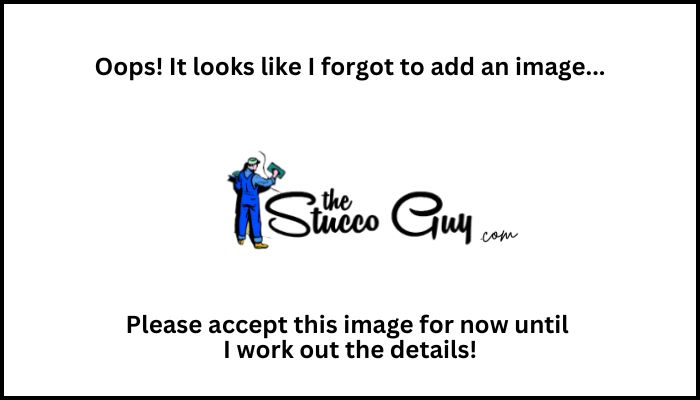
There are many different elements that make up the stucco process and when we look at the lathing portion of that system, there are even more confusing elements involved like plaster stop.
So, what is plaster stop and what is it used for? That is what this article is all about, so let's take a deep dive into plaster stop.
What Is Plaster Stop?
Plaster stop is a "J" shaped piece of metal (in most cases) that provides a clean termination point for stucco. It can be mounted horizontally or vertically and comes in a couple of different sizes.
It can be called a number of different things in addition to plaster stop, like casing bead, j trim or j stop.
It is a lot like weep screed, but without the drain holes. The drain holes allow water to drain out but with plaster stop, it is usually mounted around objects in a wall like an electrical panel, windows, etc. It is also used to stop the stucco where other accessories like corner aid or weep screed would not work.
What Does Plaster Stop Look Like?
Plaster stop is shaped like the letter "J" and is really just a simple piece of metal. It resembles the "J" shaped weep screed, without the weep holes. The back flange is usually shorter than weep screed, unless you order a long flange plaster stop, which has a larger flange for nailing.
What Is Plaster Stop Used For?
Like I mentioned, it is used in a number of different places, but it is not always needed. In fact, it is used sparingly in most stucco applications due to the added cost of the material and the extra time it takes to install it.
It is required in some scenarios, though, like exterior doors and transitions from stucco to another type of material. It is a bit confusing, so let me lay out a few examples.
Exterior Doors: Plaster stop is always used on exterior doors, unless a wooden piece of trim will be used instead. Exterior door frames are usually installed with their frames mounted flush with the sheathing, so you would need a stopping point for your stucco along the edge of the door.
Along The Top of the Wall: Plaster stop can also be installed along the top of the walls, where the roof rafters meet the top plate to create an additional ground (depth guide) and to provide a stopping point. Adding a piece of plaster stop in this area is not absolutely necessary, like when eave blocks are present that form a natural stopping point.
Around Elements Protruding Out of Wall: Some things that pop out of the wall that does not have a natural stopping point for the stucco will need to have plaster stop installed around it.
These can include electrical panels, vents, windows, etc. If any of these are mounted flush or close to flush with the shear, then plaster stop will have to be used in order to have a stopping point for the stucco at full depth.
Where Stucco Stops and Another Material Starts: If there is a situation where the stucco will be stopping on the wall somewhere and another material will then be used, then plaster stop will usually be used as the transition piece. This can be substituted with a piece of wood instead, which is sometimes the case.

